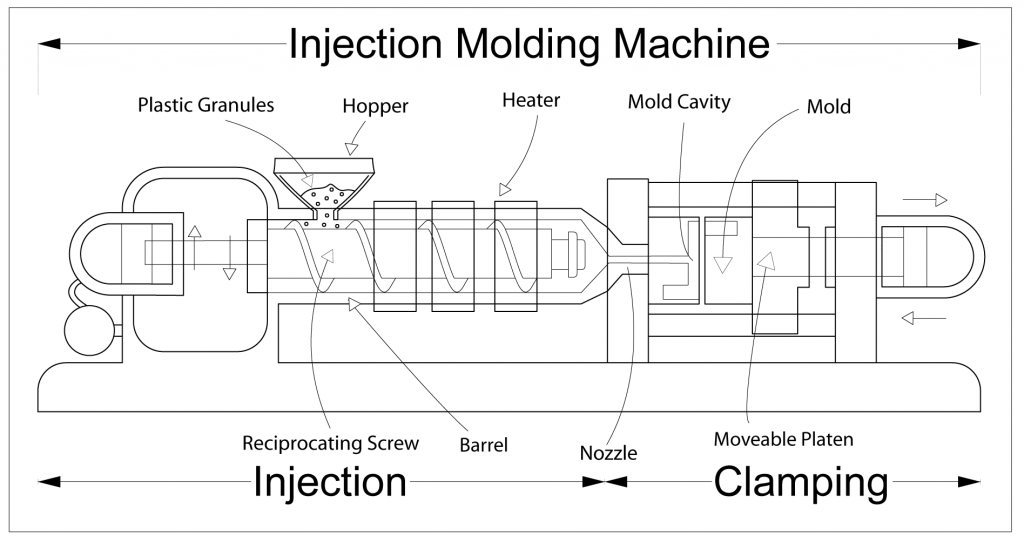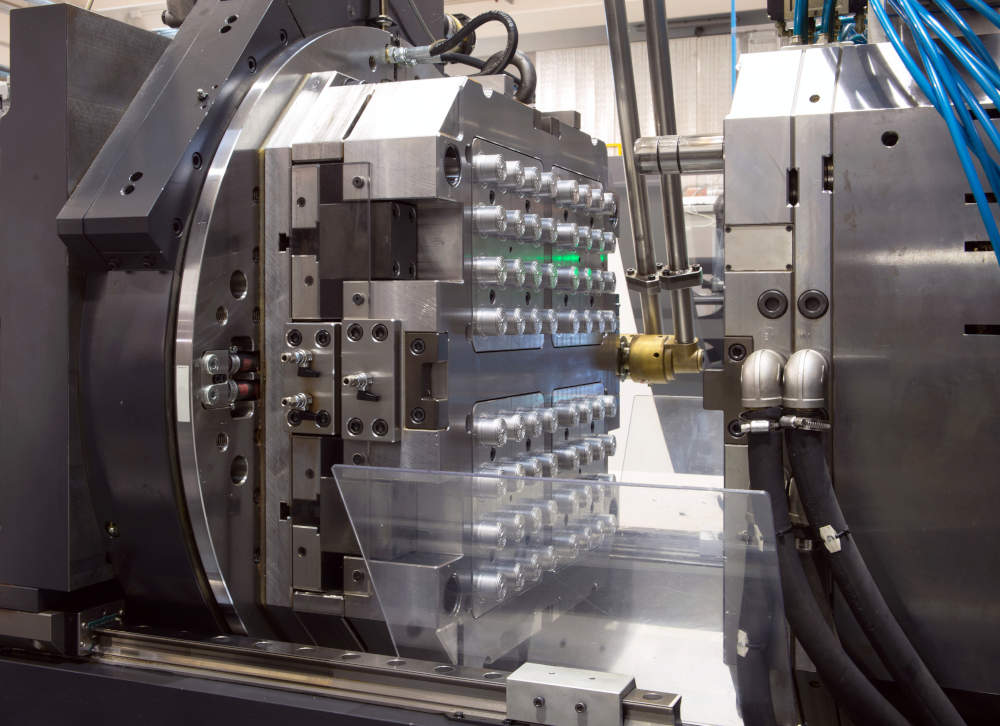Understanding the Plastic Injection Molding Refine for High-Quality Production
Understanding the Plastic Injection Molding Refine for High-Quality Production
Blog Article
Understanding the Fundamentals of Plastic Injection Molding Processes
Plastic shot molding offers as a keystone of modern-day production, supplying a methodical technique to generating complicated elements with precision. Exploring these essential aspects might disclose just how even small modifications can lead to substantial improvements in production end results, elevating inquiries regarding the capacity for innovation in this recognized process.
What Is Plastic Shot Molding?
Plastic shot molding is a commonly utilized manufacturing procedure that changes polycarbonate and thermosetting materials into precise and intricate shapes. This strategy is preferred for its ability to create high quantities of similar get rid of exceptional precision, making it an essential method in various sectors, including auto, customer items, and clinical devices.
The procedure involves melting the picked plastic material and infusing it right into a mold under high pressure. The mold, developed to the requirements of the desired part, permits the molten plastic to materialize as it cools down and strengthens. As soon as the product has set, the mold is opened, and the completed element is ejected.
Plastic shot molding uses several advantages, including minimized waste, consistency in manufacturing, and the ability to include detailed styles that might be challenging with other producing methods. Furthermore, it sustains a wide array of products, each giving unique properties that can be tailored for details applications. As industries remain to innovate, plastic shot molding continues to be at the center, making it possible for the growth of innovative items that fulfill advancing customer demands.
The Injection Molding Process
The shot molding procedure is an innovative strategy that involves several vital stages to create top notch plastic elements. Plastic pellets are fed right into a warmed barrel where they are melted right into a viscous liquid. This molten plastic is then injected under high stress right into a precision-engineered mold and mildew, which forms the product into the desired kind.
Once the mold and mildew is filled up, the plastic is allowed to strengthen and cool, taking the form of the mold and mildew cavity. Air conditioning time is critical, as it influences the cycle time and the last properties of the shaped part. After enough air conditioning, the mold and mildew opens, and the ended up component is ejected utilizing ejector pins.

Products Used in Injection Molding
Different products can be used in the shot molding procedure, each offering distinct properties that cater to specific applications. The most typically made use of products include thermoplastics, thermosetting plastics, and elastomers.

Thermosetting plastics, like epoxy and phenolic resins, go through a chemical change during the treating procedure, resulting in an inflexible, inflexible structure. These products are optimal for applications requiring high warmth resistance and structural stability, typically made use of in vehicle components and electrical insulators.
Elastomers, consisting of silicone and rubber-based materials, offer versatility and resilience. Their unique residential properties make them ideal for applications that demand flexibility, such as seals and gaskets.
Furthermore, specialized products like bio-based plastics and composites helpful resources are acquiring grip for their ecological advantages and improved performance attributes, widening the scope of injection molding applications in various industries. Comprehending the buildings of these products is critical for picking the appropriate type for specific jobs.
Benefits of Shot Molding
Injection molding attracts attention as a highly efficient manufacturing procedure that uses many benefits for generating intricate components with accuracy. Among the most substantial advantages is the capability to produce elaborate styles that would be difficult or impossible to attain with other approaches (Plastic Injection Molding). The procedure permits limited tolerances and detailed features, making certain high-quality elements
Additionally, shot molding is known for its quick manufacturing capabilities, making it an excellent option for high-volume production. As soon as the mold and mildew is created, parts can be created rapidly, reducing preparations and raising total efficiency. This efficiency not just reduces production costs yet likewise supplies a competitive side in the marketplace.
The adaptability of materials used in shot molding further boosts its appeal. A broad range of thermoplastics and thermosetting polymers can be utilized, permitting makers to select products that best fulfill their specific demands, including heat, versatility, and strength resistance.
Additionally, the process reduces waste, as excess product can commonly be recycled and reused. This sustainability element adds to a lowered ecological influence, making shot molding a responsible manufacturing choice. In general, the benefits of shot molding make it a preferred technique for several industries.
Factors Impacting Product Top Quality
While numerous factors can influence product top quality in shot molding, recognizing these check components is crucial for accomplishing optimal results. Key aspects include material choice, processing criteria, and mold design.
Material selection plays an important duty, as various polymers show special residential or commercial properties that affect flowability, strength, and thermal stability. Poor product selection can lead to defects such as bending or insufficient filling.
Processing parameters, consisting of temperature level, cycle, and stress time, should be thoroughly managed. Variants in these setups can cause variances partially measurements and surface area finish. For circumstances, excessively high temperatures may cause deterioration of the polymer, while insufficient stress can lead to brief shots.
Mold design is equally crucial, as it identifies the circulation of the molten plastic and the cooling procedure. Poorly designed mold and mildews may bring about uneven air conditioning rates, causing dimensional mistakes and recurring anxieties.

Verdict
Finally, plastic shot molding serves as an important production procedure that makes it possible for the efficient production of top quality components. Mastery of the injection molding process, including the understanding of products and the influence of different aspects on product quality, is vital for achieving optimal results. The benefits of this technique, such as cost-effectiveness and layout adaptability, further highlight its relevance throughout several markets, solidifying its status as a favored option for high-volume production.
Plastic injection molding offers as a cornerstone of modern helpful hints production, supplying a methodical approach to generating intricate parts with precision.Plastic shot molding offers several benefits, including reduced waste, uniformity in manufacturing, and the capacity to integrate intricate layouts that might be testing with various other manufacturing approaches (Plastic Injection Molding). As industries continue to innovate, plastic injection molding stays at the center, enabling the development of innovative products that satisfy progressing customer needs
The injection molding procedure is an innovative method that involves a number of key stages to produce high-grade plastic elements.In verdict, plastic injection molding serves as a critical production procedure that allows the effective production of top notch elements.
Report this page